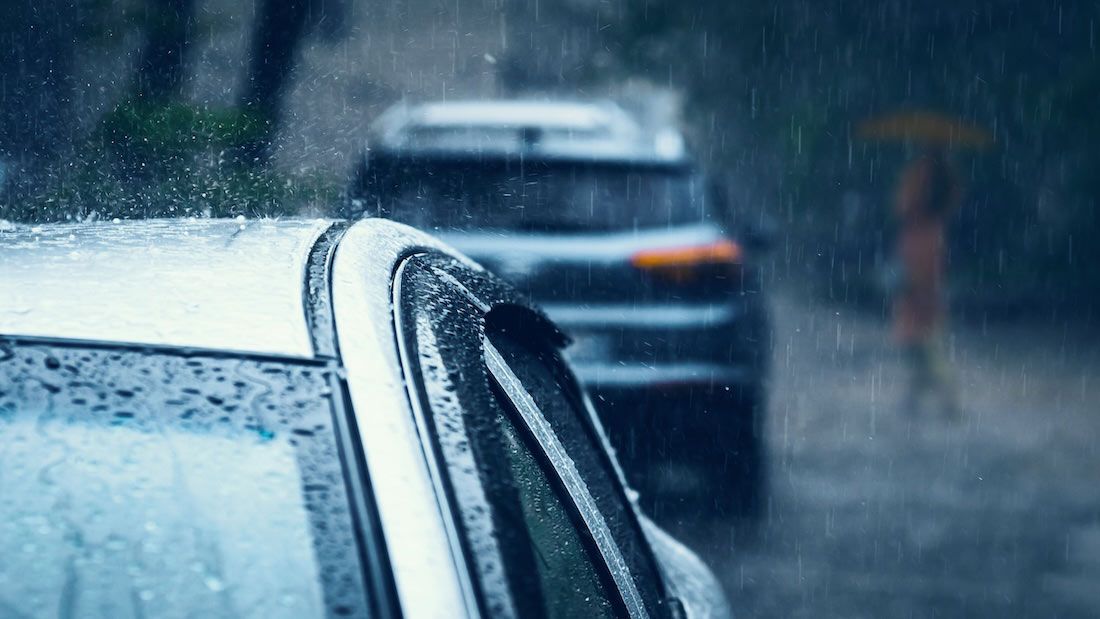Can an EV Drive Through Water? Tips to Protect Your Vehicle

Can EV Cars Drive Through Water? Will It Get Damaged ?
Thailand's geography, with its low-lying river basins, often causes flooding. This naturally raises concerns for those considering an electric vehicle (EV): Can an EV car drive through water safely? Will it pose a risk to passengers and the car itself? How can damage be prevented? Let’s explore these questions in detail.
Can EV Cars Handle Floods?
Modern electric vehicles are designed to meet water resistance standards, but this doesn’t mean they are fully waterproof or can handle deep floods without issues. Here’s what you need to know:
The EV Must Meet IP67/68 Standards
The IP (International Protection) Standard certifies dust and water resistance for electrical equipment, including electric vehicles. Here's what the numbers mean:
• First digit (0-6): Indicates dust protection level, with 0 being no protection and 6 being completely dustproof
• Second digit (0-9): Indicates water protection level, with 0 being no protection and 9K being protection against high-pressure water jets
IP67 certification ensures dust protection and water resistance when submerged up to 1 meter for 30 minutes, while IP68 provides complete dust protection and permanent water submersion resistance.
Therefore, if your EV car has IP67/68 certification in flood situations you can have some confidence that it won't suffer severe damage when driving through shallow water, though deeper water can still reach other car components and can cause damage.
Know the Safe Water Depth for Driving
Even with water resistance, EVs are not designed to plow through deep water. Driving an EV car in flood conditions beyond a safe depth may result in water penetrating the electrical system, potentially damaging the car. Generally, the maximum safe water depth for EVs is around 40 centimeters, roughly at the height of most car’s door frame.
Stay Informed and Avoid Flood-Prone Areas
During the rainy season or in flood-prone regions, keep track of flood levels and avoid routes with standing water. Monitoring weather reports and local flood updates can help you prepare and plan safer travel routes. If flooding is unavoidable, park your car on elevated ground to prevent water damage.

Essential Tips for Driving an EV Car in Flood Conditions
If you must drive through a flooded area unexpectedly, follow these steps to minimize potential damage and ensure safety:
Drive Slowly
Reduce your speed to prevent water from splashing into the vehicle’s sensitive components. Driving slowly also gives you better control over the car on slippery roads.
Assess the Water Level
Before driving through a flooded area, check the water depth. If it rises above the curb or your car's door frame, it’s better to turn back or find an alternative route for safety.
Maintain Distance from Vehicles Ahead
Moving vehicles create waves that can raise water levels, potentially causing water to splash into the vehicle's systems and cause damage. Maintain a safe distance from the vehicle in front. This also reduces accident risks if vehicle control becomes difficult.
Turn Off the Air Conditioning
It’s advisable to turn off your air conditioner and other electrical systems while driving through water to minimize strain on the vehicle’s electronics and reduce the risk of short circuits.
Don’t Turn Off the Engine Immediately
Once you’ve reached a safe, dry area, avoid turning off your car right away. Let the engine run for a few minutes to allow any moisture in the system to evaporate, reducing the chance of electrical malfunctions.
Inspect Your EV After Driving Through Water
After driving through a flooded area, inspect your EV for any signs of damage or irregularities. Pay close attention to the battery, electrical components, brakes, and other vital parts. Also, dry the car’s interior, including carpets and seats, to prevent mold or bacterial growth.
During Thailand’s annual rainy season, floods are a common challenge in many regions. Stay informed about weather updates and avoid heavily flooded areas whenever possible. For more EV news, including safety tips and in-depth guides, visit the EVme website.
References
1. Can I drive an electric car in a flood?. Retrieved November 7, 2024, from https://www.electrifying.com/blog/knowledge-hub/electric-cars-and-floods-everything-you-need-to-know
2. Electric cars in Thailand floods: Should you continue driving ? Retrieved November 7, 2024, from https://thethaiger.com/guides/automotive/electric-cars-in-thailand-floods-should-you-continue-driving




